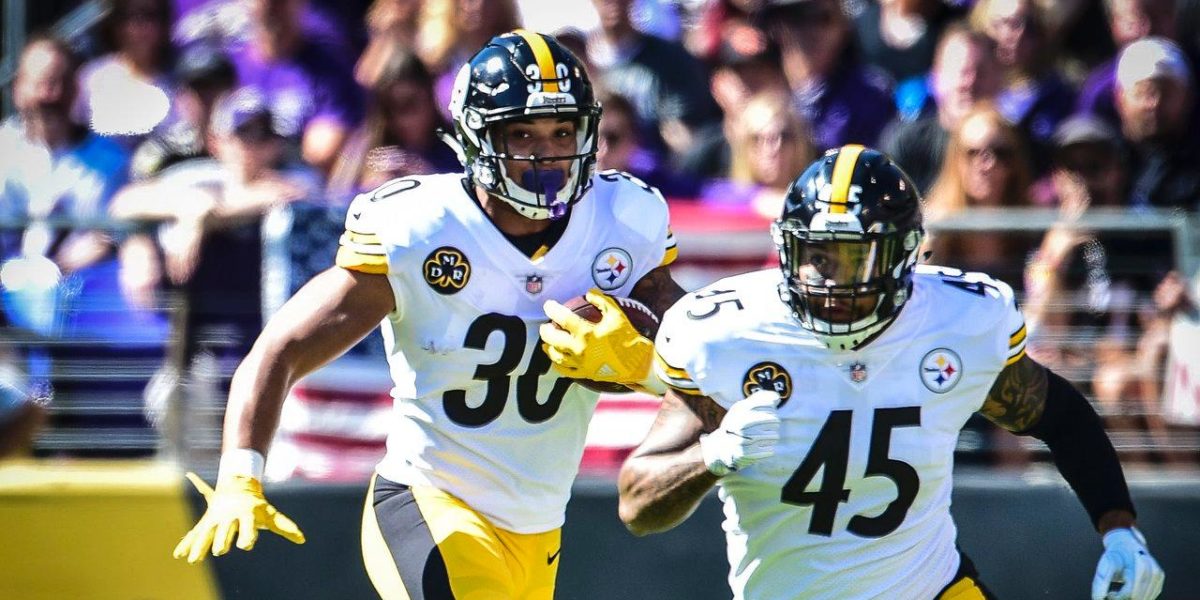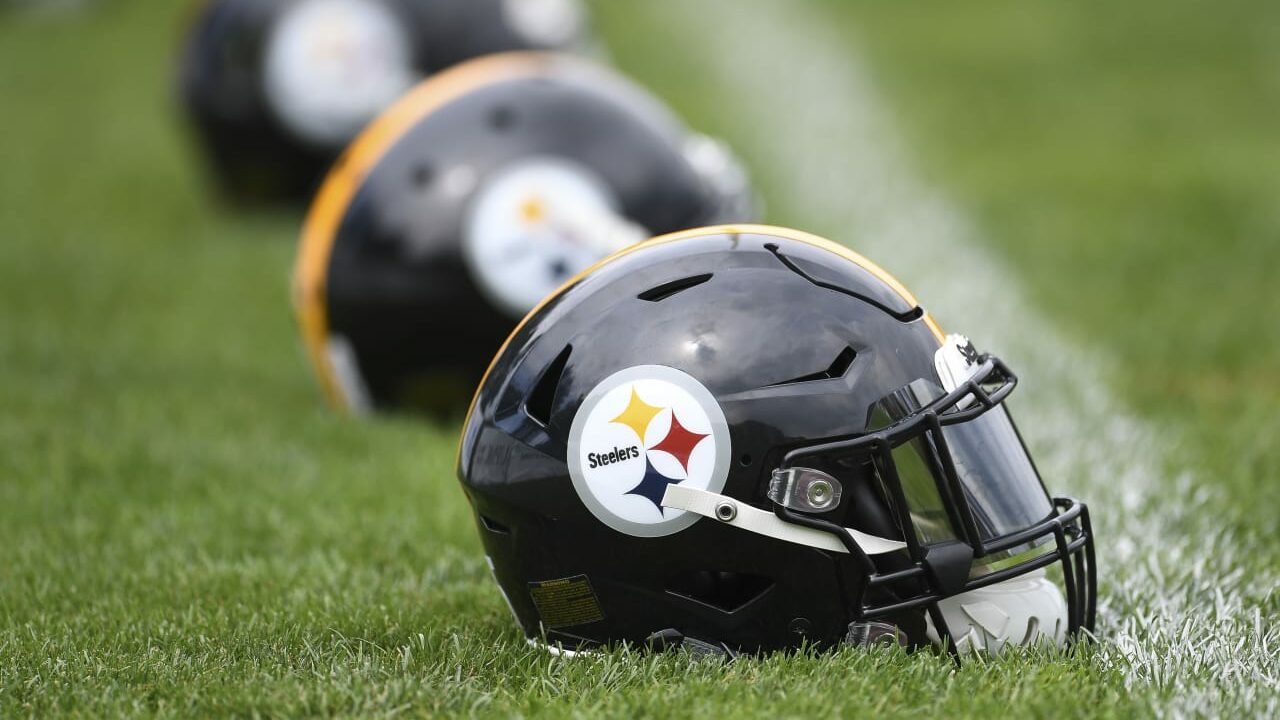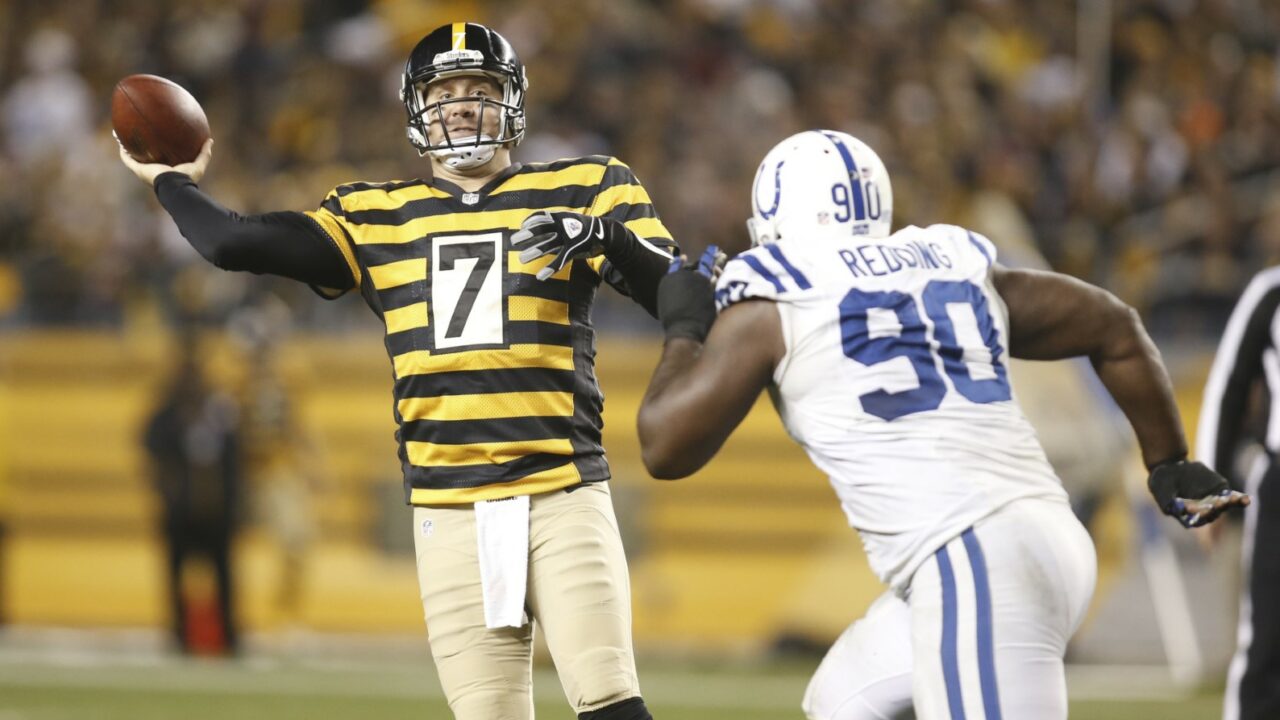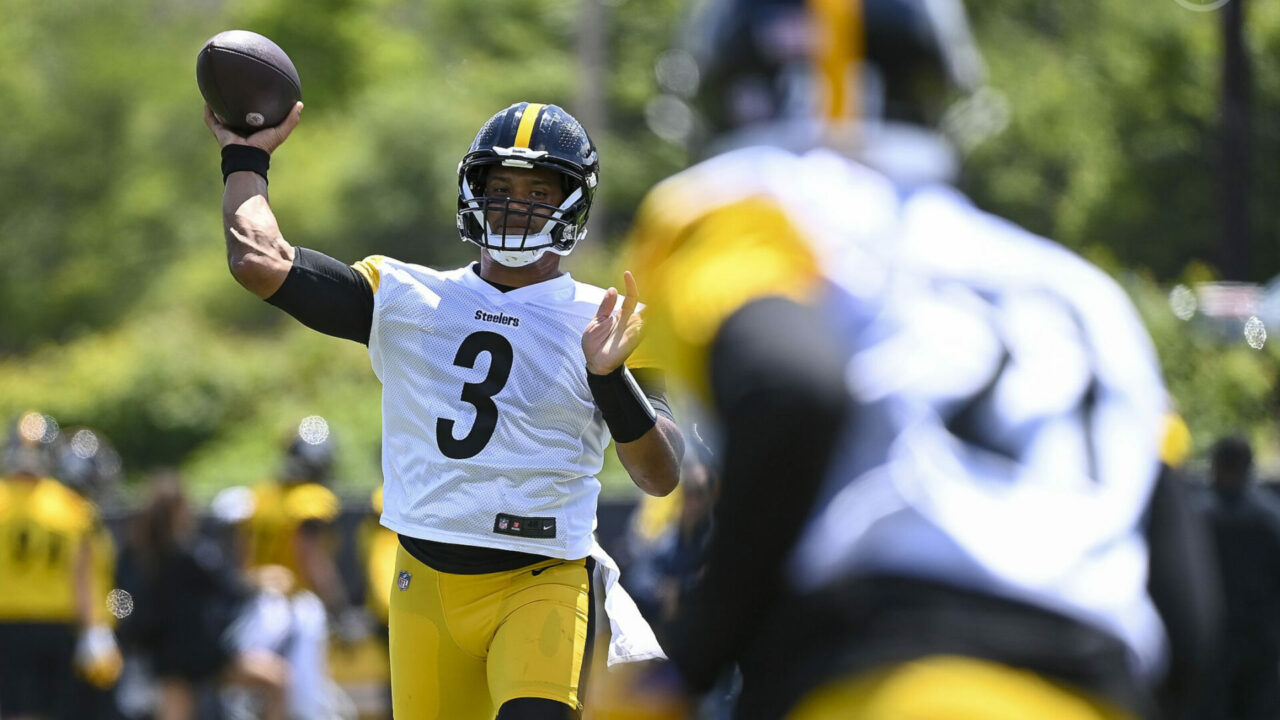Steelers running back comparison by history: “Bell” cow vs. committee
Another year, another set of speculative propositions for Pittsburgh’s offense.
That’s the way I feel when glancing around and seeing comments on the Internet. The Steelers added Kentucky RB Benny Snell in the fourth round of this year’s NFL Draft and ever since, we’ve heard about him being the perfect fit in a black and gold uniform.
While I have no doubts that Snell is an incredible talent, and one that Steelers Nation will fall in love with, I needed to address the hype surrounding the team’s latest backfield addition. However, the expectations of this rookie should be tempered based on a history of how the Steelers distribute carries.
That is, they traditionally do not distribute them… other than to the top dog on the depth chart.
I want to note that this article is in no way a slight at Snell, rather, a realistic view of what we could expect to see in 2019 based on a pattern of how running backs have been used in the Steelers offense over the last decade.
The best way to explain this is as follows: James Conner had a tremendous amount of hype when he was drafted. So much so, that his jersey was one of the best-selling that offseason. As beloved as he was (and still is) he had to wait his turn in line behind Le’Veon Bell before getting the spotlight.
That same thing could happen with Snell, and has already occurred with last year’s fifth-round pick, Jaylen Samuels… and it has happened in the past, but so has a running back by committee approach as well.
Here’s a breakdown on how the Steelers running backs had their carries distributed over the years. Keep in mind, I tried to stick with a true “RB1” approach. There are a few games where carries were distributed differently due to the starting back getting hurt or heading to the sidelines early with the game well in hand. I made note of those situations below.
Note: With all but a few Michael Vick games in 2015, there are so few designed quarterback running plays that I left quarterback “carries” off of the chart. I didn’t feel that I could accurately gage when a quarterback scrambled versus when a designed pass play broke down. (Which also pertains to Vick.)
Those numbers are also skewed with QB sneaks or victory formation kneel downs counting statistically as a “carry”. So for all intents and purposes, the “other” category means other running backs or the rare instance of a wide receiver end-around play.
2018 Season
| Week | Conner | Others |
|---|---|---|
| 1 | 31 | 1 |
| 2 | 8 | 3 |
| 3 | 15 | 3 |
| 4 | 9 | 1 |
| 5 | 21 | 5 |
| 6 | 19 | 1 |
| 8 | 24 | 4 |
| 9 | 24 | 1 |
| 10 | 13 | 14 |
| 11 | 9 | 0 |
| 12 | 13 | 1 |
| 13 | 15 | 2 |
| 17 | 14 | 3 |
| Totals | 215 | 39 |
The 2018 season was heavily dominated by the new feature back in town, James Conner. Conner was injured in Week 13 and sat for the next three games. In that time, Jaylen Samuels would have 42 carries to Stevan Ridley‘s 11. When Conner started, Samuels carried the ball 14 times and Ridley had 18: 8 of those carries by Ridley were in the blowout Carolina Panthers game on the short Thursday Night Football week.
The totals are roughly 5:1 for Conner versus anyone else and 4:1 for Samuels in the three games he played in Conner’s absence.
2017 Season
| Week | Bell | Others |
|---|---|---|
| 1 | 10 | 4 |
| 2 | 27 | 3 |
| 3 | 15 | 1 |
| 4 | 35 | 6 |
| 5 | 15 | 4 |
| 6 | 32 | 3 |
| 7 | 35 | 5 |
| 8 | 25 | 1 |
| 10 | 26 | 2 |
| 11 | 12 | 5 |
| 12 | 20 | 1 |
| 13 | 18 | 3 |
| 14 | 13 | 2 |
| 15 | 24 | 4 |
| 16 | 14 | 11 |
| Totals | 321 | 55 |
Le’Veon Bell carried he ball far more than any other back this season, in an almost 6:1 split.
That was with James Conner as his primary backup, until Conner was injured and Stevan Ridley was signed near the end of the season. The Steelers would smash the Houston Texans on Christmas day, giving Bell an early break where Ridley would carry the ball eight times.
The Week 17 game against the Browns is left off of this chart as Bell would sit. Ridley had 17 carries while Fitzgerald Toussaint added 5 more.
Conner would finish his rookie season with a total of 32 carries.
2016 Season
| 2016 | Bell | Williams | Others |
|---|---|---|---|
| 1 | N/A | 26 | 3 |
| 2 | N/A | 32 | 3 |
| 3 | N/A | 8 | 1 |
| 4 | 18 | 4 | 1 |
| 5 | 20 | 1 | 0 |
| 6 | 10 | 3 | 2 |
| 7 | 21 | N/A | 1 |
| 9 | 14 | 1 | 0 |
| 10 | 17 | N/A | 1 |
| 11 | 28 | N/A | 0 |
| 12 | 23 | N/A | 6 |
| 13 | 29 | N/A | 0 |
| 14 | 38 | N/A | 1 |
| 15 | 23 | N/A | 2 |
| 16 | 20 | N/A | 1 |
| 17 | N/A | 23 | 5 |
| Totals | 261 | 98 | 27 |
| RB1 | 327 | 27 |
Another year in which everyone felt there could be a two-headed monster in the backfield, the concept never materialized. For starters, Bell was suspended to start the season, leaving DeAngelo Williams as the primary back. Williams would miss a large portion of games this season, either injured or never entering the game otherwise.
As you can see between Bell and Williams, the breakdown of snaps is over 10:1 for the lead back. A committee approach was never considered.
2015 Season
| 2015 | Bell | Williams | Others |
|---|---|---|---|
| 1 | N/A | 21 | 4 |
| 2 | N/A | 20 | 1 |
| 3 | 19 | 1 | 0 |
| 4 | 22 | 2 | 0 |
| 5 | 21 | 5 | 0 |
| 6 | 24 | 1 | 1 |
| 7 | 17 | 4 | 2 |
| 8 | 10 | 9 | 0 |
| 9 | N/A | 27 | 3 |
| 10 | N/A | 17 | 2 |
| 12 | N/A | 8 | 1 |
| 13 | N/A | 26 | 4 |
| 14 | N/A | 23 | 2 |
| 15 | N/A | 14 | 0 |
| 16 | N/A | 17 | 3 |
| 17 | N/A | 5 | 12 |
| Totals | 113 | 200 | 35 |
| RB1 | 291 | 35 |
DeAngelo Williams was added to the roster in free agency and didn’t disappoint in the lead role. He would start the first two games of 2015 with Bell suspended, then takeover when Bell was injured in Week 8.
The numbers trend toward what would occur the following season, with the lead back getting the lion’s share of the carries.
RB1 Composite Totals
| Years | Games | RB1 | Other | Note |
|---|---|---|---|---|
| 2018 | 12 | 215 | 25 | (minus CAR) |
| 2017 | 13 | 321 | 44 | (minus HOU/CLE) |
| 2016 | 15 | 327 | 22 | (minus CLE) |
| 2015 | 15 | 291 | 23 | (minus CLE) |
| Totals | 55 | 1154 | 114 |
Above are the grand totals for the primary back versus any other back on the roster at that time. Conner, Bell, and Williams are considered for the games they started. (Samuels, despite starting in three games, still shared the ball in his first pro start.)
Blowout games or games where starters were rested (Week 17 games against Cleveland) were also removed to show the greater emphasis on the primary back and how the Steelers have used a “Bell Cow” philosophy since 2015. The lead back accounted for 91% of carries in 55 out of a potential 64 regular season games. However, I felt it was important to go all the way back to the Steelers last Super Bowl team to see how things operated before and after Le’Veon Bell was drafted in 2013.
| Player | 2010 | 2011 | 2012 | 2013 | 2014 |
|---|---|---|---|---|---|
| Rashard Mendenhall | 324 | 228 | 51 | ||
| Isaac Redman | 52 | 110 | 110 | 10 | |
| Mewelde Moore | 33 | 22 | |||
| Jonathan Dwyer | 9 | 16 | 156 | 49 | |
| John Clay | 10 | ||||
| Chris Rainey | 26 | ||||
| Baron Batch | 25 | ||||
| Le’Veon Bell | 244 | 290 | |||
| Felix Jones | 48 | ||||
| LeGarrette Blount | 65 | ||||
| Dri Archer | 10 | ||||
| Josh Harris | 9 | ||||
| LaRod Stephens-Howling | 6 | ||||
| RB1 | 324 | 243 | 184 | 268 | 290 |
| Other | 94 | 143 | 184 | 89 | 84 |
Mendenhall was the lead back by far in 2010, the Steelers last appearance in a Super Bowl. In 2011 he nearly reached 1000-yard season, but tore his MCL in the final game of the year. Ike Redman took his place in that game and would carry the ball 19 times, further chipping away at the “other” total of 143, which is minus the one game Redman started in place of Mendenhall and led the team with 15 carries.
Mendenhall would be benched for inconsistent play and ultimately suspended for no-showing a game at the end of the 2012 season. The offense struggled with erratic run play as noted by how many backs carried the ball as opposed to other seasons. (Chris Rainey and Baron Batch nearly equaled James Conner’s rookie carry total!)
The irony? A perfect 50/50 split between the “RB1” and other backs for totals carries over the entire 2012 season. (“RB1” was derived from the starting back’s carries in games this year.)
The 0-4 start to the 2013 season is highlighted by more anamolies until Le’Veon Bell made his first start in Week 4. Bell was injured in camp and unavailable over the first three weeks of the season, leaving a contingent of Redman, Dwyer, and Felix Jones as the backs in those games. Redman and Jones would technically start, totaling 24 carries, however the ineffectiveness of the run game would lead to Dwyer out-touching both in Week 3 with a dozen rushing attempts.
Bell joined the roster in Week 4, seeing the end of Redman in a Steelers uniform while Dwyer and Jones still added received carries: more than any other backups in recent years… except for the misnomer known as LeGarrette Blount.
In 2014, Blount was signed to be Bell’s backup. In a “thunder and lighting” approach, Blount was actually used far more than any backup running back in Pittsburgh since 2014. He is the only backup back to receive more than six carries with the RB1 healthy and/or starting: and he did so five of the ten games he was active.
Coincidentally, he didn’t receive a carry in a come from behind win against the Tennessee Titans (where Bell ran for 204 yards) and subsequently walked out on the team for lack of carries. (Had he not left, his 84 carries in nine games would’ve easily broken the “other” category for the entire decade!)
In the five seasons which followed, DeAngelo Williams is the only other running back to enter a game and carry the ball more than six times with the primary back as the starter/active: he had nine carries against the Cincinnati Bengals in 2015 when Bell was carted off of the field. (Note: this is of the 55 “primary back” games over this time span, as Stevan Ridley would qualify twice after entering blowouts against the Texans in 2017 and Panthers in 2018.)
Also of note, even throwing out the conditions listed, Blount is the only backup since the 2014 season to have ten or more carries in a single game. (He would accomplish this feat twice that season.)
Conclusion
Despite a plethora of talent at the running back position the Steelers have been one of the few teams in the NFL to stick to having a primary back over the last few seasons. While other teams consider a “committee” approach to splitting carries, it’s difficult to envision this become a part of Pittsburgh’s game plans unless their offensive philosophy were to change.
With that in mind, Snell does have the power style that saw Blount used the most of any backup this decade. So maybe, just maybe, we may see more of him than we’d expect!









